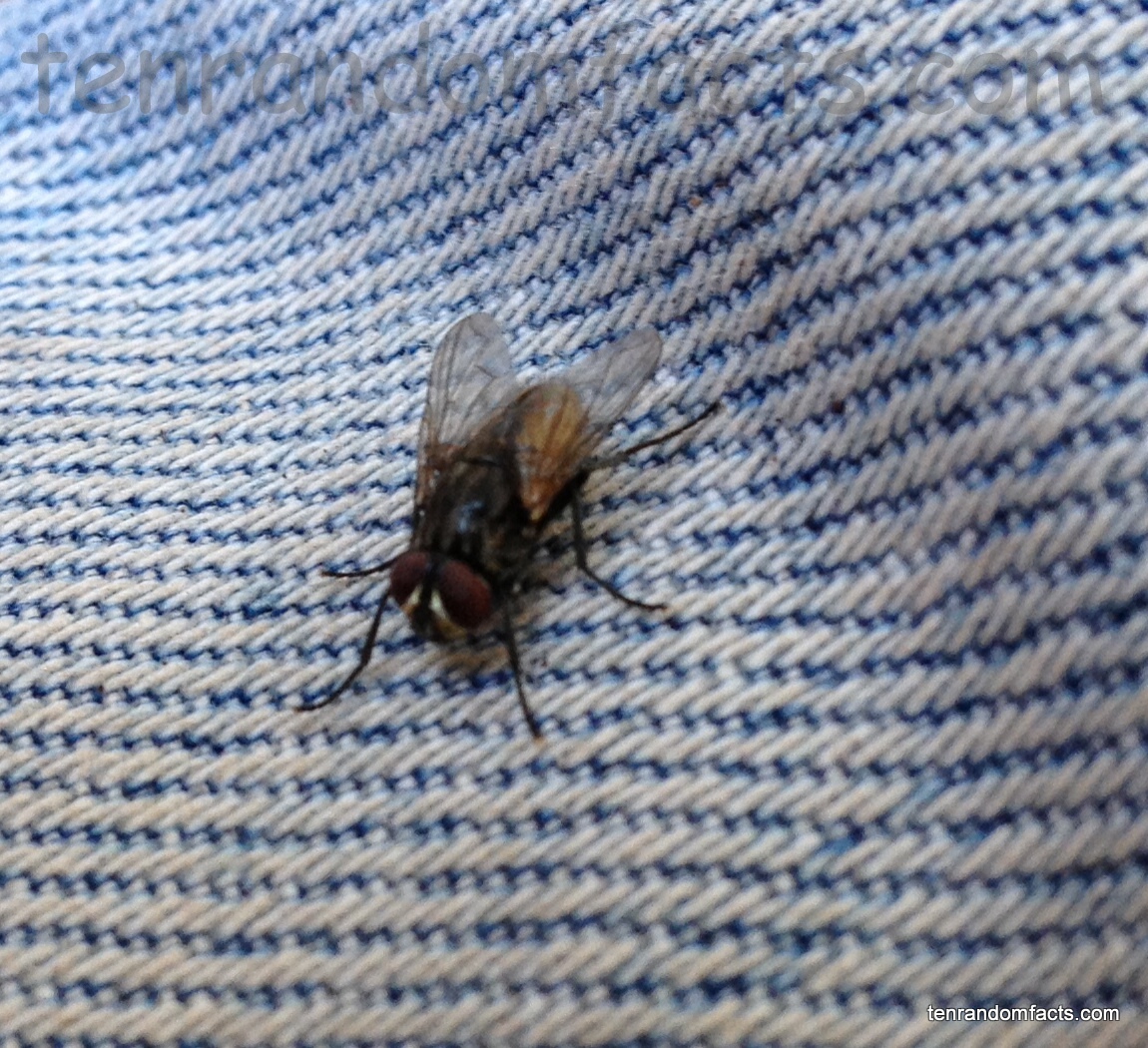“Shoo fly, don’t bother me!”
- ‘Houseflies’ are also known as ‘house flies’, ‘house-flies’, ‘common houseflies’ and ‘common flies’ and are often referred to by their generic name ‘fly’.
- The scientific name of houseflies is Musca domestica, and they are from the family Muscidae, which is a family of flies.
- Houseflies are the most common type of domestic fly, making up 91% of all domestic flies.
- Houseflies grow to be 5 to 8 millimetres (0.2 to 0.3 inches) in length and have one pair of wings, that have a few major veins in them.
- Houseflies generally have a grey or black thorax with a brown to yellow coloured abdomen and are somewhat hairy.
- Housefly maggots can become pupa after a half to one and a half days, and live two to four weeks as an adult.
- Female adult houseflies usually lay eggs in waste products, 75 to 150 eggs at a time, and can lay up to 9000 eggs in its life.
- A housefly egg takes on average a day to hatch, and grow quickest in warm to hot weather.
- Houseflies can be carriers of over 100 diseases of parasites, bacteria and viruses.
- Houseflies can convert solid food to liquid, and they have tubular shaped tongues, like straws, with which they suck up their food.
Bibliography:
Flies, n.d, Pestworld for Kids, http://www.pestworldforkids.org/flies.html
Housefly, 2013, Wikipedia, http://en.wikipedia.org/wiki/House_fly







